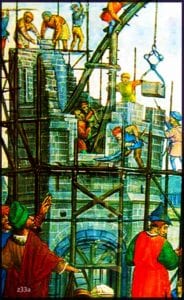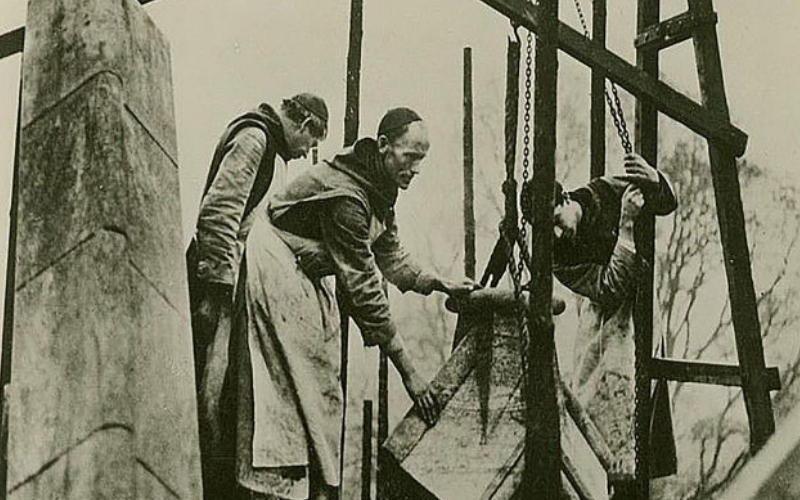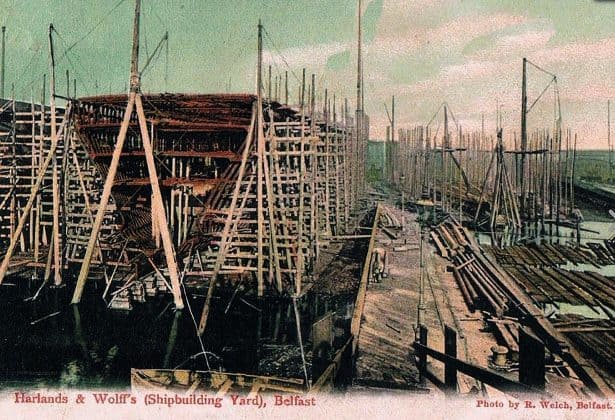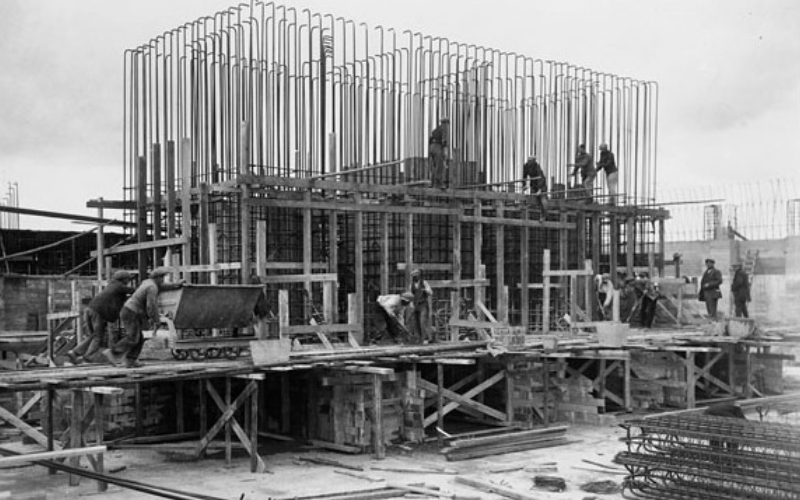Buildings throughout the world have been constructed using scaffolding. These same structures are used in maintenance, repair, and make improvements in addition to construction. Seeing the steel and wood plank structures we know today, it is hard to think about it being used throughout history. A deeper look into history shows scaffolding used throughout antiquity in one version or another. Many of the methods used hundreds of years ago are still employed today. Some of the older methods are used exactly as they were at that time, while others have employed modern conventions. The one thing which is undeniable is the importance of scaffolding in creating and maintaining many of the structures we know and love today. From disposable scaffolding made from bamboo to metal structures used today in scaffolding rental and more, it comes in many forms. By taking a look at the history of scaffolding, there is an opportunity to see how modern scaffolding came to be and find improvements that can be made for the future. Here, you will learn about how scaffolding was used in ancient times, through the medieval and Victorian times, and as we know it in modern times. Improvements in the scaffolding structures themselves and safety standards have all been paramount in creating a construction system that can create even the grandest of structures.
Ancient Scaffolding Techniques

Some of the earliest known scaffolding to be used was created to assist with cave paintings. Evidence was found in Lascaux, France of scaffolding, which was used to paint on Paleolithic caves in the region. These crude structures were not built to support construction or to bear any more weight than just the painter and paint. While these structures would be unrecognizable and crude by modern standards, they were the first step to provide the world with what it would need to create some of the marvels of the world. These structures are believed to have been used over 17,000 years ago.
The Egyptians are documented as using scaffolding to build the many great pyramids. These were devised to assist with lifting the stones from one platform to the next with a series of lifts. Hoisted from one level to the next, these structures allowed the Egyptians to accomplish what would have been an impossible task. Used over 4,500 years ago, it is not surprising to learn the scaffolding was not as we would recognize it today. The single-use structure was built entirely with the task of lifting stones and supporting the workers needed to move the stones into place once lifted. Resembling something closer to stairs, this scaffolding was lashed together with wood and hemp rope. The scaffolding was not anchored to the structure of the pyramid itself, and as such was not very safe for the workers tasked with construction. Such safety standards would not be normalized for thousands of years.
Romans utilized scaffolding widely to create some of the structures still in use today. Such things as the Pont du Gard were constructed utilizing scaffolding. This amazing aqueduct is three levels reaching over 50 meters high and spanning over 300 meters in length. Built from limestone, it was necessary to use scaffolding to haul the materials in place and support the workers needed to construct such immense structures. Timber scaffolding was used along with mortar to improve upon the construction techniques of the Greeks. Evidence of the use of scaffolding is brought to us from a drawing recovered from the tomb of Trebius Justus in Rome. The drawing depicts scaffolding showing workers on both sides of a wall which suggests the use of a cantilever system even through the structure as shown appears to be free-standing. A look at the scaffolding used during the period of 300 A.D., you see the structure which would become modern scaffolding.
Throughout Asia, scaffolding has played a significant role in creating many of the structures we know today. The Great Wall of China is a prime example of how scaffolding was used to build structures. The wall itself was built throughout several dynasties and can be unique throughout the length of the structure. The type of scaffolding used was more akin to the type of scaffolding used today in parts of Asia. Bamboo structures were lashed together using hemp rope to offer the support necessary to support workers, tools, and masonry used in building one of the seven wonders of the world.
Scaffolding through Medieval Times

It is well-documented monks have been instrumental in the advancement of scaffolding towards modern structures as we know them. In fact, a few pieces of the technology they invented and employed, are still in use to this day. Pictures have been taken of monks in more recent history utilizing the same technology they have utilized for an extended period of time—these monks utilized scaffolding, which was more of a semi-permanent structure. Timbers were constructed together to support the weight of the workers and stones as they were lifted into place to construct and repairs abbeys and other religious structures. Over time, they were employed to provide assistance in building structures beyond the religious community. Hoists utilizing chains were employed to make lifting heavy objects easier as well as assisting in moving these items into place.
Throughout the Victorian era, timber was lashed into place utilizing hemp rope. Using rope and wood, scaffolding provided construction crews the means by which to haul tools, equipment, and supplies right where they were needed. Unfortunately, the safety standards still did not exist. Many workers wore such clothing as suits while working on buildings. No helmets or safety ropes were employed up this point in history, making working on scaffolding a dangerous task only the best-skilled workers should have attempted. With a need for workers greater than the supply of skilled workers, many learned their lessons the hard way.
Scaffolding in Modern Times
Modern scaffolding utilizes steel and aluminum water pipes to construct sturdy structures capable of supporting workers, tools, material, and more. These can be constructed by companies on-site as well as by using mobile structures provided by scaffolding rental companies like Cal-West Rentals. While bamboo is still employed in parts of Asia, it is not nearly as common as it used to be due to safety concerns and a lack of workers intent on learning how to build scaffolding from this material. Among the least used materials is a composite pipe created with filament-wound tubes of glass fiber in a nylon or polyester matrix. The expense of these pipes makes them less attractive but is perfect for when working with electricity to prevent conductivity.
Among the biggest advancements in modern scaffolding was due to the invention of the improved “Universal Coupler”. This coupler was created by Daniel Palmer-Jones as an answer to the problem of lashing together metal tubes with ropes. The lashes would not suffice to prevent the supports from slipping while in use. The previous model to the modern coupler was “Rapid Scaffixers”. The invention and subsequent patent of which allowed them to be awarded the contract to remodel Buckingham Palace in 1913. By creating the universal coupler, the standardized system used to support scaffolding as we know it today was invented. It is still in use today in the type of scaffolding you can rent at Cal-West Rentals as well as from companies that build scaffolding on site.
Throughout ancient Roman, Egyptian, and Asia, scaffolding has provided us with the means to create structures impossible solely by the power of workers. Safety factors have dramatically improved over the centuries to the point where modern scaffolding seldom is responsible for injuries. Thanks to such things as netting and external piping, scaffolding has been made nearly as safe as working on the ground. As you start to think about your next project, whether to use scaffolding rental or not and what costs you may encounter, you now have an appreciation for the history of scaffolding and all the improvements made over the centuries.
Contact a Rental Pro Today
Give us a call so we can get you set up with the right type of scaffolding rental for your next construction project.
Photo Credits: Reaching for the sky – A potted history of scaffolding




